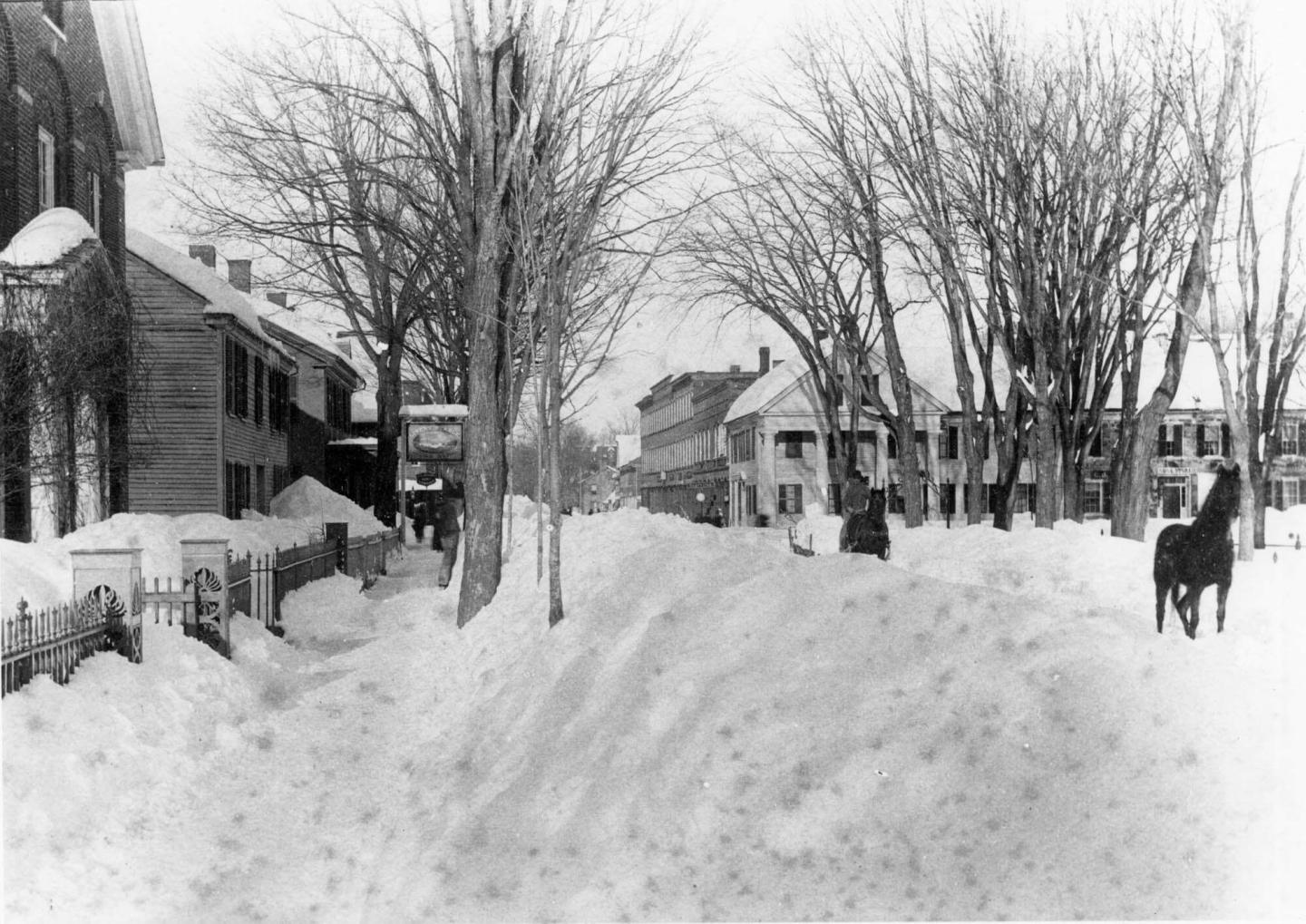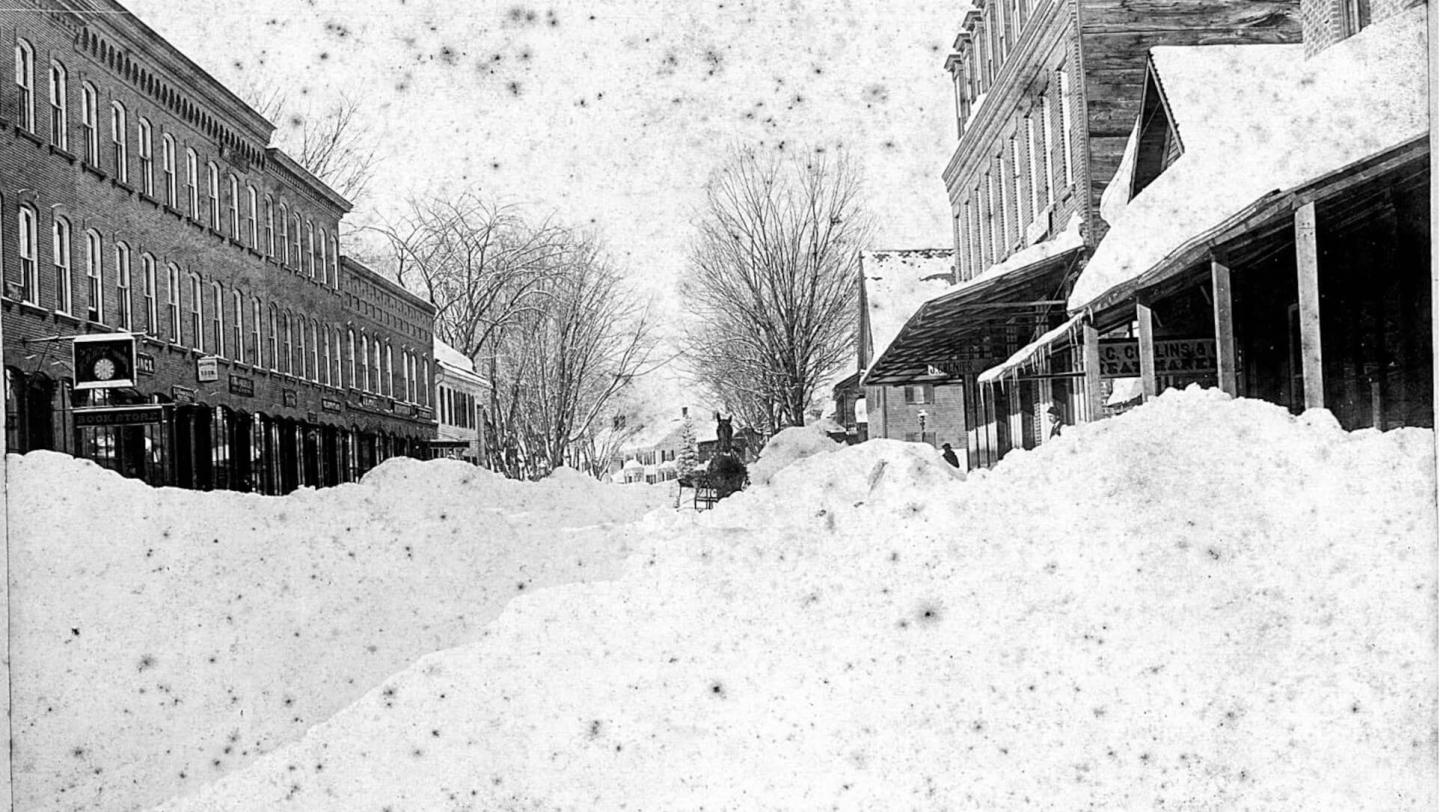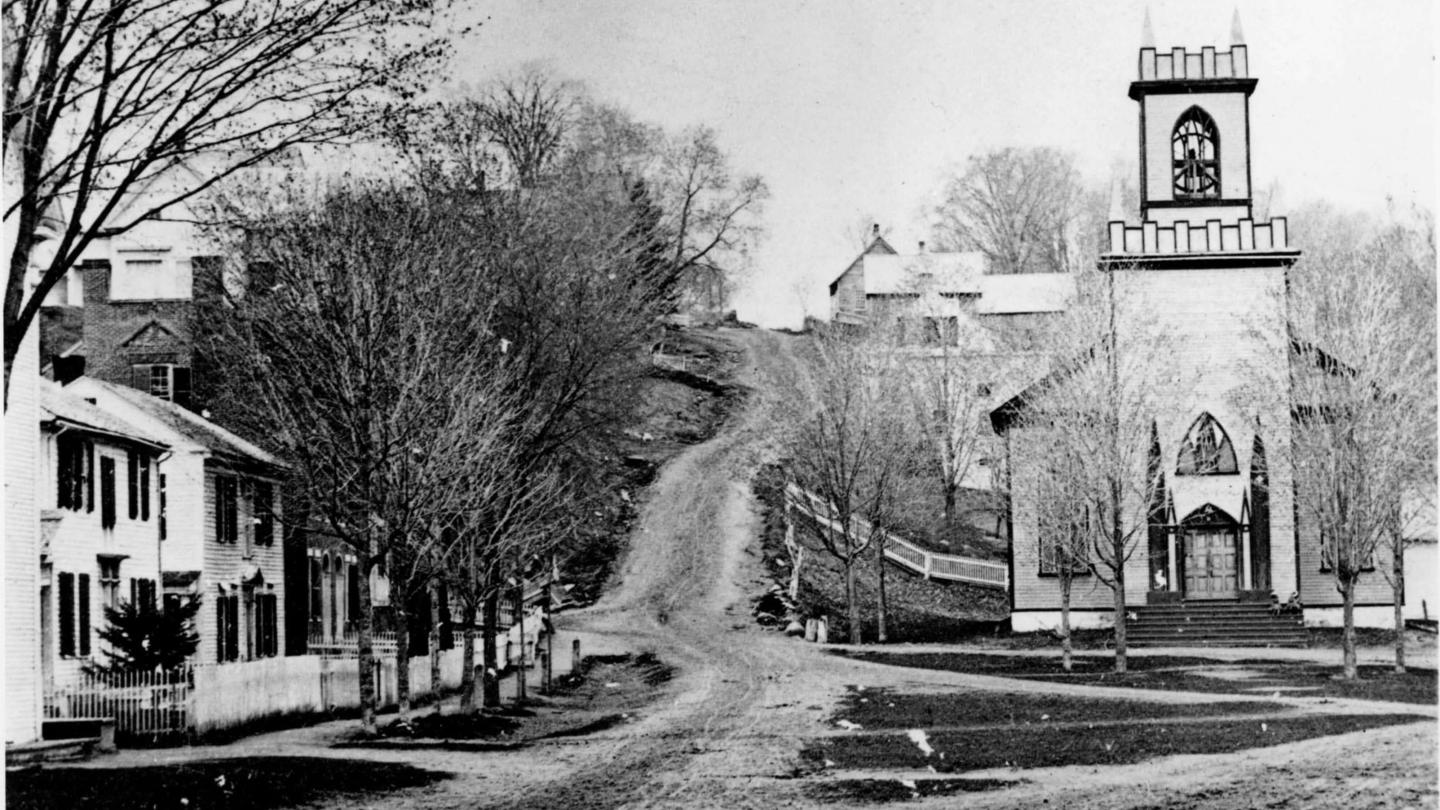March of 1888 gave all the signs of an early spring: temperatures rose as flowers pushed through the earth and birdsong filled the air. That is, until March 12th roared in like a lion, unleashing the worst blizzard in New England history: The Great White Hurricane.
Forecasts anticipated the weather, but not its intensity; the US Signal Service predicted the storm would dissolve or head seaward. The blizzard stubbornly refused to do either until March 14th.

Many were caught woefully unprepared. What is now believed to be a convergence of a storm and a cold front, the hurricane—also known as The Great Blizzard of 1888—blasted 10 Northeastern states with three to five feet of snow, killing an estimated 400.

And Vermont saw some of the storm’s worst weather. Over two days, Southern Vermont temperatures plunged below 6°F as more than 40 inches of snow was whipped through the air by 40 MPH gale-force winds, piling drifts as high as 6.5 feet in Woodstock Village.
For days afterward, towns and cities were unreachable to the outside world. And if anyone wanted to leave their abode, well, tunneling through mountains of snow was often the only mode of transportation.
Accounts of downed telegraph wires, overturned trains, and people buried in drifts found alive by chance—or something as small as the tips of their hats peeking through the snow—can be found far and wide on the web. But pictures remain the starkest proof. Thanks to the invention of the camera decades before, The Great White Hurricane is not just one of the worst storms in US history, but also the first to be widely photographed, enabling us to glimpse what our ancestors experienced over 130 years ago.

References:
Remembering the Blizzard of 1888. (2015, January 26). Retrieved from https://newengland.com/today/living/new-england-history/blizzard-of-1888/
The blizzard of 1888. (2016, March 9). Retrieved from https://americanhistory.si.edu/blog/blizzard-1888
The Blizzards of 1888. (Undated). Retrieved from https://vlab.ncep.noaa.gov/web/nws-heritage/-/the-children-s-blizzard
Then Again: A massive blizzard brings Vermont to a halt. (2017, March 19). Retrieved from https://vtdigger.org/2017/03/19/then-again-a-massive-blizzard-brings-vermont-to-a-halt/
Worst Snowstorms in New England History. (2021, January 11). Retrieved from https://newengland.com/today/living/new-england-history/worst-snowstorms-in-new-england-history/

